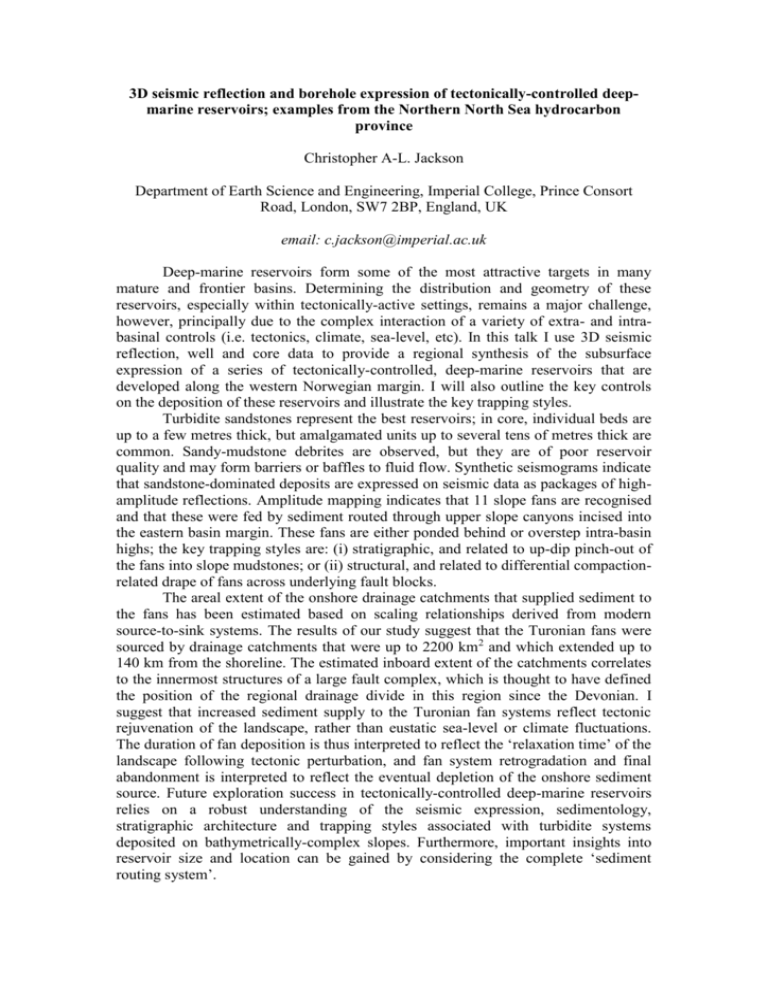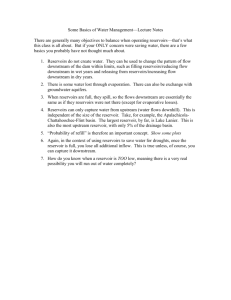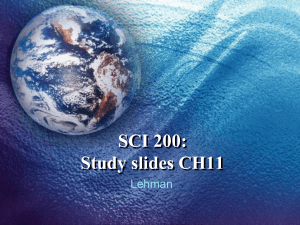tectonically-controlled deep-marine reservoirs
advertisement

3D seismic reflection and borehole expression of tectonically-controlled deepmarine reservoirs; examples from the Northern North Sea hydrocarbon province Christopher A-L. Jackson Department of Earth Science and Engineering, Imperial College, Prince Consort Road, London, SW7 2BP, England, UK email: c.jackson@imperial.ac.uk Deep-marine reservoirs form some of the most attractive targets in many mature and frontier basins. Determining the distribution and geometry of these reservoirs, especially within tectonically-active settings, remains a major challenge, however, principally due to the complex interaction of a variety of extra- and intrabasinal controls (i.e. tectonics, climate, sea-level, etc). In this talk I use 3D seismic reflection, well and core data to provide a regional synthesis of the subsurface expression of a series of tectonically-controlled, deep-marine reservoirs that are developed along the western Norwegian margin. I will also outline the key controls on the deposition of these reservoirs and illustrate the key trapping styles. Turbidite sandstones represent the best reservoirs; in core, individual beds are up to a few metres thick, but amalgamated units up to several tens of metres thick are common. Sandy-mudstone debrites are observed, but they are of poor reservoir quality and may form barriers or baffles to fluid flow. Synthetic seismograms indicate that sandstone-dominated deposits are expressed on seismic data as packages of highamplitude reflections. Amplitude mapping indicates that 11 slope fans are recognised and that these were fed by sediment routed through upper slope canyons incised into the eastern basin margin. These fans are either ponded behind or overstep intra-basin highs; the key trapping styles are: (i) stratigraphic, and related to up-dip pinch-out of the fans into slope mudstones; or (ii) structural, and related to differential compactionrelated drape of fans across underlying fault blocks. The areal extent of the onshore drainage catchments that supplied sediment to the fans has been estimated based on scaling relationships derived from modern source-to-sink systems. The results of our study suggest that the Turonian fans were sourced by drainage catchments that were up to 2200 km2 and which extended up to 140 km from the shoreline. The estimated inboard extent of the catchments correlates to the innermost structures of a large fault complex, which is thought to have defined the position of the regional drainage divide in this region since the Devonian. I suggest that increased sediment supply to the Turonian fan systems reflect tectonic rejuvenation of the landscape, rather than eustatic sea-level or climate fluctuations. The duration of fan deposition is thus interpreted to reflect the ‘relaxation time’ of the landscape following tectonic perturbation, and fan system retrogradation and final abandonment is interpreted to reflect the eventual depletion of the onshore sediment source. Future exploration success in tectonically-controlled deep-marine reservoirs relies on a robust understanding of the seismic expression, sedimentology, stratigraphic architecture and trapping styles associated with turbidite systems deposited on bathymetrically-complex slopes. Furthermore, important insights into reservoir size and location can be gained by considering the complete ‘sediment routing system’.






